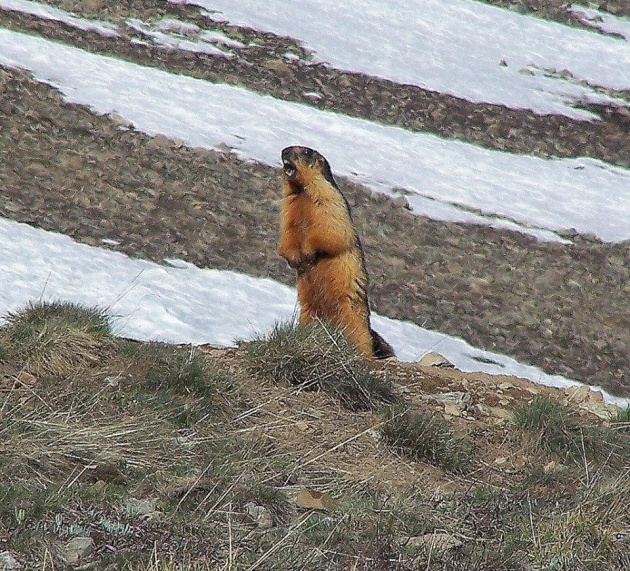The Deosai National Park is located in the Skardu District of Gilgit-Baltistan province, in northernmost Pakistan. Deosai means 'the land of Giants'.
The Deosai National Park is located in Skardu Gilgit-Baltistan province, in northern Pakistan. Deosai is accessible from Skardu District in the north and the Astore District in the west. Deosai means 'the land of Giants'. The park is located on the Deosai Plains of the Gilgit-Baltistan geographic region. Deosai is a tourist attraction and lot of tourists who visit Baltistango to Deosai as well. Deosai Plateau which is the second highest plateau in the world after the Chang Tang in Tibet. In local Balti language, Deosai is called Byarsa, meaning ‘summer place’. The plateau is located at the boundary of the Karakorum and the western Himalayas.
Deosai National Park is at an average elevation of 4,114 metres (13,497 ft) above the sea level, making the Deosai Plains one of the highest plateaus in the world. The park protects an area of 3,000 square kilometres (1,200 sq mi). It is well known for its rich flora and fauna of theKarakoram-West Tibetan Plateau alpine steppe ecoregion. In the Spring season it is covered by sweeps wildflowers and a wide variety of butterflies.
Deosai - Sheosar Lake
Deosai Lake, or Sheosar Lake from the Shina language meaning "Blind lake" (Sheo - Blind, Sar - lake)[ is in the park. The lake, at an elevation of 4,142 metres (13,589 ft), is one of the highest lakes in the world. Its length is 2.3 kilometres (7,500 ft), width 1.8 kilometres (5,900 ft) and average depth 40 metres (130 ft). It is located near the Chilim Valley on the Deosai Plains.
Wildlife
The Deosai National Park was established in 1993 to protect the survival of theHimalayan brown bear and its habitat. Having long been a prize kill for poachers and hunters, the bear now has a hope for survival in Deosai where its number has increased from only 19 in 1993 to 40 in 2005. During the last decade, a few but effective measures have been taken by the Government of Pakistan for the survival of brown bear in the region. In 1993, Himalayan Wildlife Project was founded with a substantial financial support from international environmental concerns. But the brown bear is still under threat.
The Deosai Plains are also home to the Himalayan ibex, red fox, golden marmot,gray wolf, the Ladakh urial, the snow leopard, and over 124 resident and migratory birds. Birds in the park include the golden eagle, lammergeier, griffon vulture, laggar falcon, peregrine falcon, kestrel, sparrowhawk and snowcock.
Cultural references
Herodotus
Research by the French ethnologist Michel Peissel makes a claim that the story of 'Gold-digging ants' reported by the Greekhistorian Herodotus, who lived in the 5th century BC, was founded on the golden Himalayan Marmot of the Deosai plateau and the habit of local tribes such as the Minaro to collect the gold dust excavated from their burrows
In film
The documentary film series Land of the Tiger, in episode 5 - the "Mountains of the Gods", features the plants and animals of Deosai.
The Deosai National Park
Posted on at



